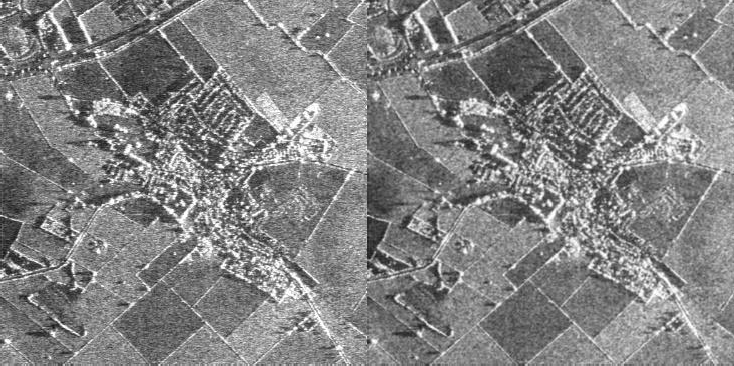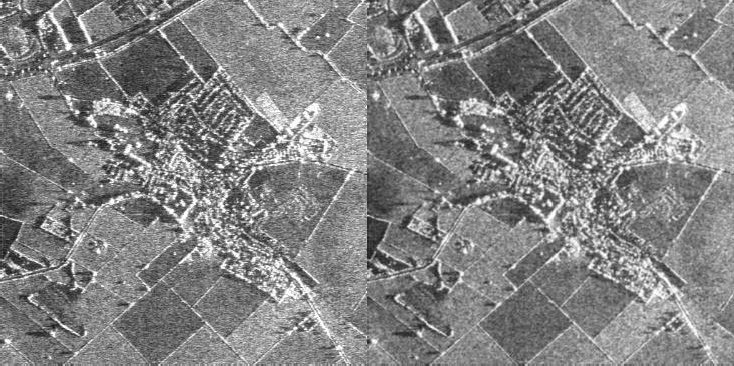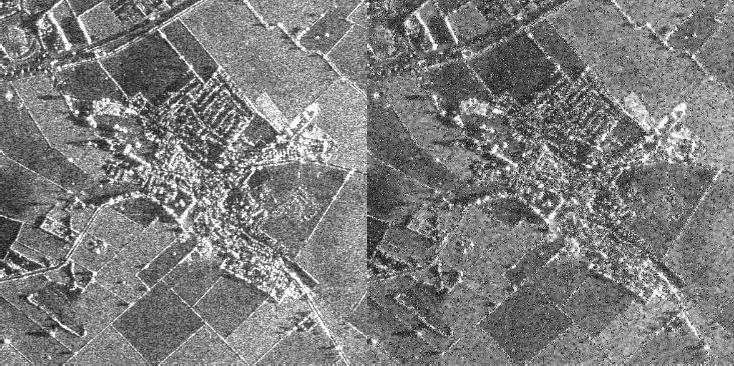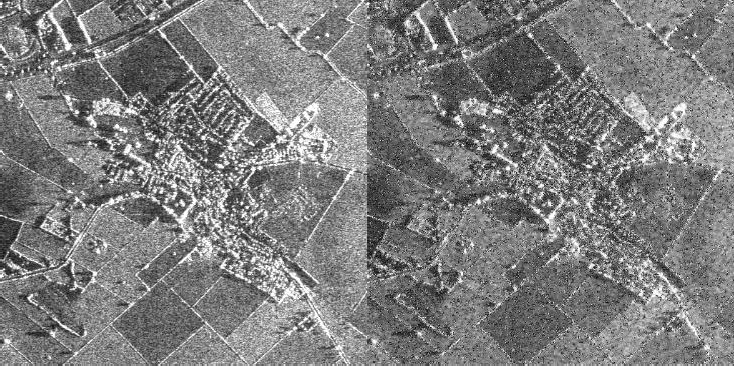1. Introduction
Radar imaging is a category of satellite imagery which creates two-dimensional and three-dimensional images, typically of landscapes. It captures images by imparting its light to illuminate the zone, receiving the reflection and storing the information at the radio wavelength. Radar imaging techniques could be primarily bifurcated into two categories: Real aperture radar (RAR) and Synthetic aperture radar (SAR). RAR captures images by transmitting a pulse of radio wavelength at right angle and further receives the backscattering which gets transformed into an image. While SAR yields high resolution images as it grants distinctive long-term coherency by moving the antenna through a series of positions [1]. It inhibits the movement of radar antenna over a target region to provide finer spatial resolution than conventional beam-scanning radars. The images are configured from the satellite by the rapid interaction and contraction of the emitted radiations from antenna with the target region. This makes SAR produce a finer quality of image over other techniques [3]. Over the last few decades, many researchers have come up with different algorithms and techniques to put forward the most optimal solution for SAR image despeckling [1-6], however there is still a need for a comprehensive study that analyses all of these and giving a high-level view of all the (real speckled SAR image is shown in Figure 1) research that guide the subsequent research in Image processing [15]. This research has come up with a comprehensive and concise study of all the techniques and studies that have been put forward and discussed over the past few decades, which will give the researcher an all-in-one detailed explanation to find their best fit technique [16-18]. Based on research studies the filtering techniques are shown in Figure 2 [19].
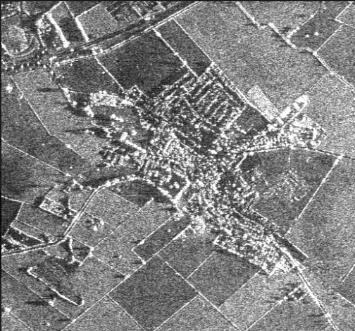
Figure 1. Real Speckled SAR image [1].
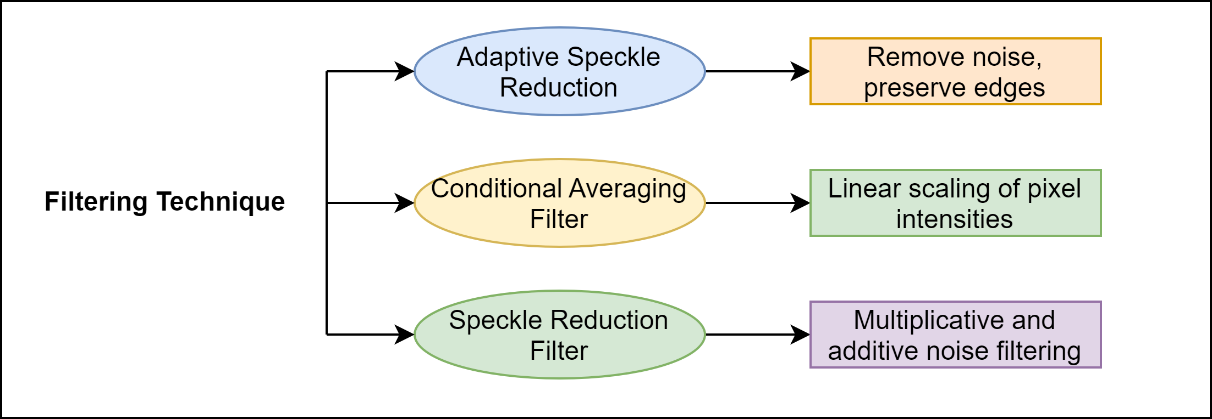
Figure 2. Filtering techniques [4].
The sections presented in the paper are as follows: The related work is discussed in section 2. Empirical and experimental result analysis of SAR images is studied in section 3. Finally, we procure conclusion and possible future work in section 4.
2. Literature survey
The literature survey of the paper is given in Table 1.
Table 1.
Reference No. | Aim & Technique | Advantage | Disadvantage |
Lattari et al, 2019 [2] | Deep encoder–decoder CNN i.e., U-net CNN framework is used in two phases, model is pre trained on synthetic & real SAR data in 1st stage. 2nd stage includes fine training by total variation (TV) regularization. | Uses complex deep learning architecture without trade-off between texture preservation & performance. Validates proposed framework by using real & stimulated data. | The stimulated noise added to the images was primordial in nature, may or may not be similar to real SAR data. A wider domain of test data could further edify the significance of study |
Table 1. (continued). | |||
Zhang et al, 2018 [4] | A non-linear end enclosed mapping between the noisy and denoised SAR is performed by using dilated residual network (SAR-DRN) for SAR despeckling. | Skip connection & residual learning preserves the texture, details and edges while solving the decreasing gradient issue. Displays tenable results for strong speckle noise. The framework is lightweight to implement. | Quantitate & visual assessment indexes used are limited and insular. |
Mastriani et al, 2016 [6] | Proposes a novel Neural Shrinkage (NS) algorithm for despeckling SAR imageries while monitoring local time scale variation. | Leverages signal regularity advantage of using wavelet shrinkage signal, but unlike classic shrinkage methods it can track time scale changes & preserves image resolution. Aids gradient learning process, with lower computation cost. | The study compares proposed framework with only linear speckle reduction method, a wider comparison could extend the reach of study. |
Cozzolino et al, 2019 [8] | A deep learning & non-local mean filtering approach that leverages self-similarity of non-local mean filtering is used | The comparative analysis is cogent & convincing, due to presence of latest work. Results for both synthetic & real SAR images is tenable. | The step wise increment of weights backtracks the framework & pixel wise filtering increases the computation complexity. |
Gragnaniello et al, 2015 [10] | Implements optimized pixel wise classification with non-local filtering technique to develop a novel soft classification technique. | The experiments validate the proposed technique with high resolution real SAR images. The comparative analysis presented with complete & cogent. | Though the comparison is made with latest techniques, but the parameters used to do so are limited. |
Ma et al, 2016 [11] | Removing speckle noise from SAR images by applying two methods namely, logarithmically transformation and novel adaptive method are used | It displays tenable performance in real multi temporal SAR images. | Comparative analysis & parameters are limited in nature, posing the research to be insular in nature. |
Yommy et al, 2015 [12] | A novel despeckling SAR technique is obtained by using k nearest neighbour method | The proposed method outperforms the classical techniques & Refined Lee Filter (RLF), along with decreased computational & space complexity. | Comparative analysis & parameters are limited in nature, posing the research to be insular in nature. |
Table 1. (continued). | |||
Di Martino et al, 2016 [13] | A novel physical-oriented probabilistic patch-based (PPB) filter technique is used | The proposed methodology exhibits substantial increase in performance from both qualitative & quantitative aspects by the application of knowledge gathered from physical aspects. | The acquisition & application of appropriate knowledge about physical attributes can be challenging & time intensive in nature. |
3. Experimental results and discussion
Radar imaging is a category of satellite imagery which creates two-dimensional and three-dimensional images, typically
3.1. Comparative qualitative analysis
In this section, experimental results of the various algorithms studies along with some images are presented to provide evidence for the effectivity of the same. The SAR image used have been shown in Figure 3, while the output of the qualitative analysis is shown in Figure 4. SAR images with artificially added noise of 5% having dimensions of 512 x 512 pixels have been used to test the performance of the algorithms. All experiments have been performed on MATLAB 2018a running on an 8th Gen i5 processor 8GB of Ram and a 64bit system. The impact of the hardware on the performance of the algorithms have been acknowledged. Six of the widely used state of the art speckle noise removal techniques namely, [11][9][7][8][1][14], have been compared against each other. Amongst them,[11] gave the best visual result with a noticeable decrease in the noise and some significant recovery of the details present in the background of the image.
(a) |
|
|
(d) |
(e) |
(f) |
(g) | |
Figure 3. (a) SAR image taken for the evaluation of the techniques (b) Despeckled result [11] (c) Despeckled result [9] (b) Despeckled result [7] (b) Despeckled result [8] (b) Despeckled result [1] (b) Despeckled result [14].
3.2. Comparative quantitative analysis
A set of 12 images were used to measure the accuracy of the techniques, leveraging commonly used image metrics such as SSIM and RMSE. In most of the cases, [11] gave the highest result with [9] at a close second. A set of 12 images were used to measure the accuracy of the techniques, leveraging commonly used image metrics such as RMSE, SSIM.
Table 2. RMSE, SSIM values for the techniques used.
RMSE | SSIM | |
[11] | 4.043 | 0.993 |
[9] | 3.952 | 0.985 |
[8] | 5.054 | 0.9796 |
[7] | 13.776 | 0.873 |
[14] | 11.43 | 0.9201 |
[1] | 14.106 | 0.862 |
In Table 2 as shown above, the data of the average of all the frameworks across all the techniques have been laid bare for perusal. Form the above data certain inferences can be drawn. The performance of [11][9] and [8] have been very close to each other, with 9% standard deviation. In a similar fashion, [7][14] and [1] have been verisimilitude across the board.
16 | 1.05 | |||
14 12 | 1 | |||
10 | 0.95 | |||
8 | ||||
6 | 0.9 | |||
4 2 | 0.85 | |||
0 | 0.8 | |||
[11] [9] [8] [7] [17] [1] | [11] [9] {8] | [7] [17] [1] |
(a)(b)
Figure 5. Plot of average of (a) RMSE and (b) SSIM for the techniques used.
The average values of the scores by the six techniques for the various measures applied over the full dataset are shown in Figure 5. This is done primarily for space reasons since it is beyond the scope of this paper to include 48 graphs to illustrate all techniques across all images. Only in this case [1] performed markedly worse than the others with a score of just 81%. The cause for this is attributed to a change of contrast in all images processed using [1]. RMSE has been taken instead of MSE to normalize the range of variation between the techniquesand between the images themselves. The formula for RMSE is given below by equation 1.
\( RMSE=\sqrt[]{\frac{\sum _{l=1}^{K}||a(l)-\hat{a}(l){||^{2}}}{K}} \) (1)
Here K represents number of data points, a(l) is the l-th measurement, and \( \hat{a}(l) \) is corresponding prediction of \( a(l) \) . In terms of overall quality preservation, both [11] and [9] give similar results, however on magnification of the images it is evident that slight blurring is present at the edges of objects in case of [9]. For practical applications both might give good results, but more evaluation may be needed in special cases. Form the above data certain inferences can be drawn. The performance of [11][9] and [8] have been very close to each other, with 9% standard deviation. In a similar fashion, [7][14] and [1] have been verisimilitude across the board.
4. Conclusion and future scope
In this research, contemporary review on latest SAR image despeckling techniques & approaches is performed including methods and filtering techniques on visual and qualitative perspective namely, Adaptive Speckle Reduction Filter, Conditional Averaging filter, Speckle Reduction Filter, Anisotropic diffusion, Speckle Reduction Filter and Speckle Reduction Filter. These filtering techniques assist in eliminating the noise while preserving the features, details & quality that contribute to significance in radar imagery. Conditional averaging filtering technique and Adaptive Speckle reduction technique despeckle the noise from image by fusion of multiplicative and additive filtering, thus making it significant to restore the vital and necessary information like edges and core that usually settle unfiltered during the initial stages of despeckling. An empirical & theoretical analysis using SSIM, RMSE factors discussing the worthiness of variegated techniques proposed is followed.
References
[1]. Vitale, S., Ferraioli, G., & Pascazio, V. (2019, July). A new ratio image based CNN algorithm for SAR despeckling. In IGARSS 2019-2019 IEEE International Geoscience and Remote Sensing Symposium (pp. 9494-9497). IEEE.
[2]. Lattari, F., Gonzalez Leon, B., Asaro, F., Rucci, A., Prati, C., & Matteucci, M. (2019). Deep learning for SAR image despeckling. Remote Sensing, 11(13), 1532.
[3]. Vitale, S., Cozzolino, D., Scarpa, G., Verdoliva, L., & Poggi, G. (2019). Guided patchwise nonlocal SAR despeckling. IEEE Transactions on Geoscience and Remote Sensing, 57(9), 6484-6498.
[4]. Zhang, Q., Yuan, Q., Li, J., Yang, Z., & Ma, X. (2018). Learning a dilated residual network for SAR image despeckling. Remote Sensing, 10(2), 196.
[5]. Chierchia, G., El Gheche, M., Scarpa, G., & Verdoliva, L. (2017). Multitemporal SAR image despeckling based on block-matching and collaborative filtering. IEEE Transactions on Geoscience and Remote Sensing, 55(10), 5467-5480.
[6]. Mastriani, M., & Giraldez, A. E. (2016). Neural shrinkage for wavelet-based SAR despeckling. arXiv preprint arXiv:1608.00279.
[7]. Cozzolino, D., Verdoliva, L., Scarpa, G., & Poggi, G. (2020). Nonlocal CNN SAR Image Despeckling. Remote Sensing, 12(6), 1006.
[8]. Cozzolino, D., Verdoliva, L., Scarpa, G., & Poggi, G. (2019, July). Nonlocal SAR image despeckling by convolutional neural networks. In IGARSS 2019-2019 IEEE International Geoscience and Remote Sensing Symposium (pp. 5117-5120). IEEE.
[9]. Zhao, W., Deledalle, C. A., Denis, L., Maître, H., Nicolas, J. M., & Tupin, F. (2018, July). RABASAR: A fast ratio based multi-temporal SAR despeckling. In IGARSS 2018-2018 IEEE International Geoscience and Remote Sensing Symposium (pp. 4197-4200). IEEE.
[10]. Gragnaniello, D., Poggi, G., Scarpa, G., & Verdoliva, L. (2015, July). SAR despeckling based on soft classification. In 2015 IEEE International Geoscience and Remote Sensing Symposium (IGARSS) (pp. 2378-2381). IEEE.
[11]. Ma, X., Shen, H., Zhao, X., & Zhang, L. (2016). SAR image despeckling by the use of variational methods with adaptive nonlocal functionals. IEEE Transactions on Geoscience and remote sensing, 54(6), 3421-3435.
[12]. Yommy, A. S., Liu, R., & Wu, S. (2015, August). SAR image despeckling using refined Lee filter. In 2015 7th International Conference on Intelligent Human-Machine Systems and Cybernetics (Vol. 2, pp. 260-265). IEEE.
[13]. Di Martino, G., Di Simone, A., Iodice, A., & Riccio, D. (2016). Scattering-based nonlocal means SAR despeckling. IEEE Transactions on Geoscience and Remote Sensing, 54(6), 3574-35.
[14]. Dutt, V., & Greenleaf, J. F. (1996). Adaptive speckle reduction filter for log-compressed B-scan images. IEEE Transactions on Medical Imaging, 15(6), 802-813.
[15]. Dhaka, A., & Singh, P. (2020). Comparative analysis of epidemic alert system using machine learning for dengue and chikungunya. Paper presented at the Proceedings of the Confluence 2020 - 10th International Conference on Cloud Computing, Data Science and Engineering, 798-804. doi:10.1109/Confluence47617.2020.9058048
[16]. Ghose, S., Singh, N., & Singh, P. (2020). Image denoising using deep learning: Convolutional neural network. Paper presented at the Proceedings of the Confluence 2020 - 10th International Conference on Cloud Computing, Data Science and Engineering, 511-517. doi:10.1109/Confluence47617.2020.9057895
[17]. Singh, P., Diwakar, M., Cheng, X., & Shankar, A. (2021). A new wavelet-based multi-focus image fusion technique using method noise and anisotropic diffusion for real-time surveillance application. Journal of Real-Time Image Processing, 18(4), 1051-1068. doi:10.1007/s11554-021-01125-8
[18]. Diwakar, M., Tripathi, A., Joshi, K., Sharma, A., Singh, P., Memoria, M., & Kumar, N. (2020). A comparative review: Medical image fusion using SWT and DWT. Materials Today: Proceedings, 37(Part 2), 3411-3416. doi:10.1016/j.matpr.2020.09.278
[19]. Bhatt, M. B., Arya, D., Mishra, A. N., Singh, M., Singh, P., & Gautam, M. (2019). A new wavelet-based multifocus image fusion technique using method noise-median filtering. Paper presented at the Proceedings - 2019 4th International Conference on Internet of Things: Smart Innovation and Usages, IoT-SIU 2019, doi:10.1109/IoT-SIU.2019.8777615
Cite this article
Singh,P.;Maurya,A.;Shankar,A.;E.,S.V.;Diwakar,M. (2023). A Review on Speckle Reduction Techniques in SAR images. Applied and Computational Engineering,8,714-720.
Data availability
The datasets used and/or analyzed during the current study will be available from the authors upon reasonable request.
Disclaimer/Publisher's Note
The statements, opinions and data contained in all publications are solely those of the individual author(s) and contributor(s) and not of EWA Publishing and/or the editor(s). EWA Publishing and/or the editor(s) disclaim responsibility for any injury to people or property resulting from any ideas, methods, instructions or products referred to in the content.
About volume
Volume title: Proceedings of the 2023 International Conference on Software Engineering and Machine Learning
© 2024 by the author(s). Licensee EWA Publishing, Oxford, UK. This article is an open access article distributed under the terms and
conditions of the Creative Commons Attribution (CC BY) license. Authors who
publish this series agree to the following terms:
1. Authors retain copyright and grant the series right of first publication with the work simultaneously licensed under a Creative Commons
Attribution License that allows others to share the work with an acknowledgment of the work's authorship and initial publication in this
series.
2. Authors are able to enter into separate, additional contractual arrangements for the non-exclusive distribution of the series's published
version of the work (e.g., post it to an institutional repository or publish it in a book), with an acknowledgment of its initial
publication in this series.
3. Authors are permitted and encouraged to post their work online (e.g., in institutional repositories or on their website) prior to and
during the submission process, as it can lead to productive exchanges, as well as earlier and greater citation of published work (See
Open access policy for details).
References
[1]. Vitale, S., Ferraioli, G., & Pascazio, V. (2019, July). A new ratio image based CNN algorithm for SAR despeckling. In IGARSS 2019-2019 IEEE International Geoscience and Remote Sensing Symposium (pp. 9494-9497). IEEE.
[2]. Lattari, F., Gonzalez Leon, B., Asaro, F., Rucci, A., Prati, C., & Matteucci, M. (2019). Deep learning for SAR image despeckling. Remote Sensing, 11(13), 1532.
[3]. Vitale, S., Cozzolino, D., Scarpa, G., Verdoliva, L., & Poggi, G. (2019). Guided patchwise nonlocal SAR despeckling. IEEE Transactions on Geoscience and Remote Sensing, 57(9), 6484-6498.
[4]. Zhang, Q., Yuan, Q., Li, J., Yang, Z., & Ma, X. (2018). Learning a dilated residual network for SAR image despeckling. Remote Sensing, 10(2), 196.
[5]. Chierchia, G., El Gheche, M., Scarpa, G., & Verdoliva, L. (2017). Multitemporal SAR image despeckling based on block-matching and collaborative filtering. IEEE Transactions on Geoscience and Remote Sensing, 55(10), 5467-5480.
[6]. Mastriani, M., & Giraldez, A. E. (2016). Neural shrinkage for wavelet-based SAR despeckling. arXiv preprint arXiv:1608.00279.
[7]. Cozzolino, D., Verdoliva, L., Scarpa, G., & Poggi, G. (2020). Nonlocal CNN SAR Image Despeckling. Remote Sensing, 12(6), 1006.
[8]. Cozzolino, D., Verdoliva, L., Scarpa, G., & Poggi, G. (2019, July). Nonlocal SAR image despeckling by convolutional neural networks. In IGARSS 2019-2019 IEEE International Geoscience and Remote Sensing Symposium (pp. 5117-5120). IEEE.
[9]. Zhao, W., Deledalle, C. A., Denis, L., Maître, H., Nicolas, J. M., & Tupin, F. (2018, July). RABASAR: A fast ratio based multi-temporal SAR despeckling. In IGARSS 2018-2018 IEEE International Geoscience and Remote Sensing Symposium (pp. 4197-4200). IEEE.
[10]. Gragnaniello, D., Poggi, G., Scarpa, G., & Verdoliva, L. (2015, July). SAR despeckling based on soft classification. In 2015 IEEE International Geoscience and Remote Sensing Symposium (IGARSS) (pp. 2378-2381). IEEE.
[11]. Ma, X., Shen, H., Zhao, X., & Zhang, L. (2016). SAR image despeckling by the use of variational methods with adaptive nonlocal functionals. IEEE Transactions on Geoscience and remote sensing, 54(6), 3421-3435.
[12]. Yommy, A. S., Liu, R., & Wu, S. (2015, August). SAR image despeckling using refined Lee filter. In 2015 7th International Conference on Intelligent Human-Machine Systems and Cybernetics (Vol. 2, pp. 260-265). IEEE.
[13]. Di Martino, G., Di Simone, A., Iodice, A., & Riccio, D. (2016). Scattering-based nonlocal means SAR despeckling. IEEE Transactions on Geoscience and Remote Sensing, 54(6), 3574-35.
[14]. Dutt, V., & Greenleaf, J. F. (1996). Adaptive speckle reduction filter for log-compressed B-scan images. IEEE Transactions on Medical Imaging, 15(6), 802-813.
[15]. Dhaka, A., & Singh, P. (2020). Comparative analysis of epidemic alert system using machine learning for dengue and chikungunya. Paper presented at the Proceedings of the Confluence 2020 - 10th International Conference on Cloud Computing, Data Science and Engineering, 798-804. doi:10.1109/Confluence47617.2020.9058048
[16]. Ghose, S., Singh, N., & Singh, P. (2020). Image denoising using deep learning: Convolutional neural network. Paper presented at the Proceedings of the Confluence 2020 - 10th International Conference on Cloud Computing, Data Science and Engineering, 511-517. doi:10.1109/Confluence47617.2020.9057895
[17]. Singh, P., Diwakar, M., Cheng, X., & Shankar, A. (2021). A new wavelet-based multi-focus image fusion technique using method noise and anisotropic diffusion for real-time surveillance application. Journal of Real-Time Image Processing, 18(4), 1051-1068. doi:10.1007/s11554-021-01125-8
[18]. Diwakar, M., Tripathi, A., Joshi, K., Sharma, A., Singh, P., Memoria, M., & Kumar, N. (2020). A comparative review: Medical image fusion using SWT and DWT. Materials Today: Proceedings, 37(Part 2), 3411-3416. doi:10.1016/j.matpr.2020.09.278
[19]. Bhatt, M. B., Arya, D., Mishra, A. N., Singh, M., Singh, P., & Gautam, M. (2019). A new wavelet-based multifocus image fusion technique using method noise-median filtering. Paper presented at the Proceedings - 2019 4th International Conference on Internet of Things: Smart Innovation and Usages, IoT-SIU 2019, doi:10.1109/IoT-SIU.2019.8777615










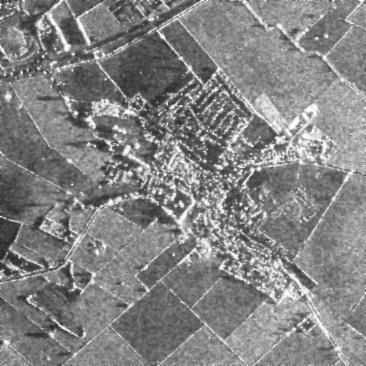
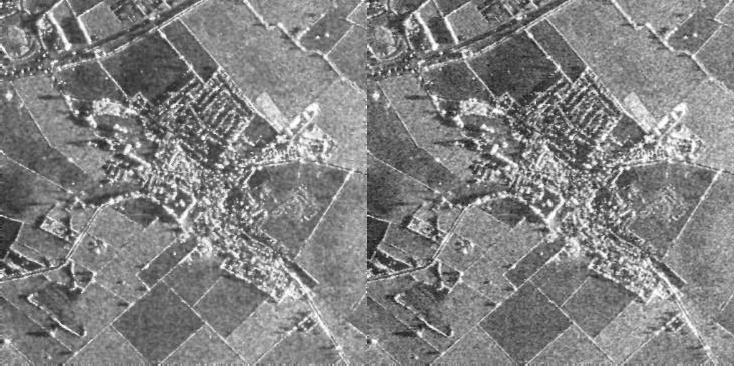 (b)
(b)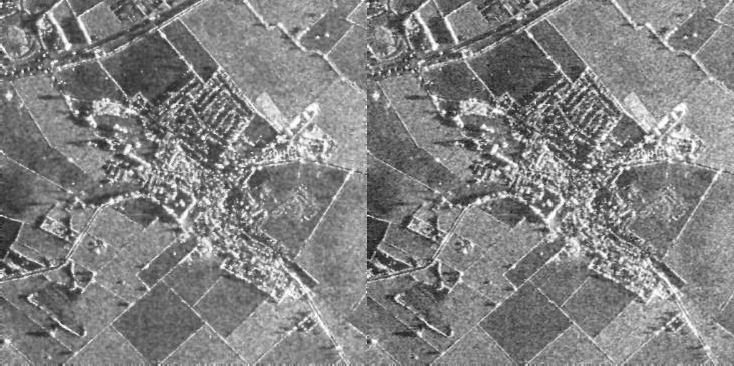 (c)
(c)